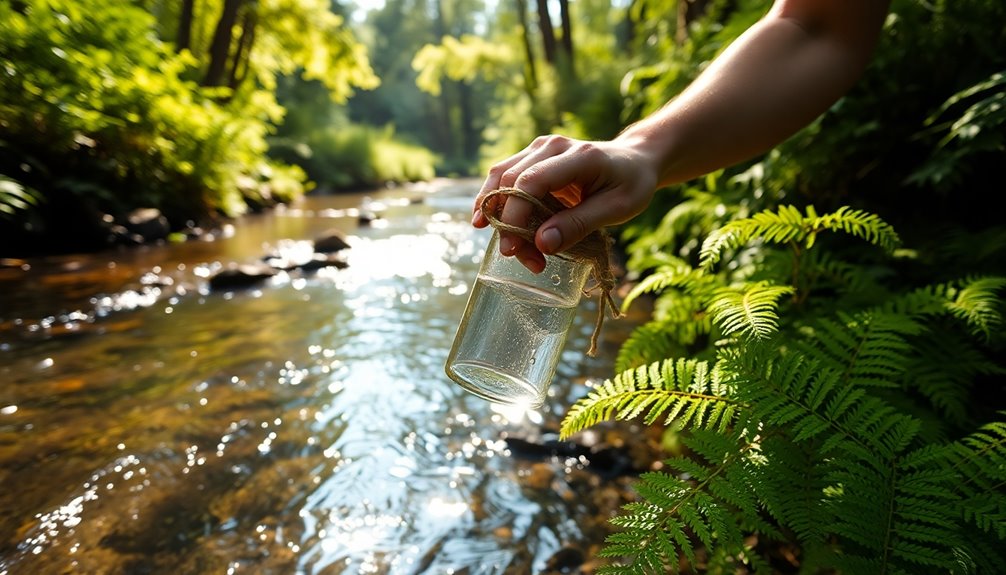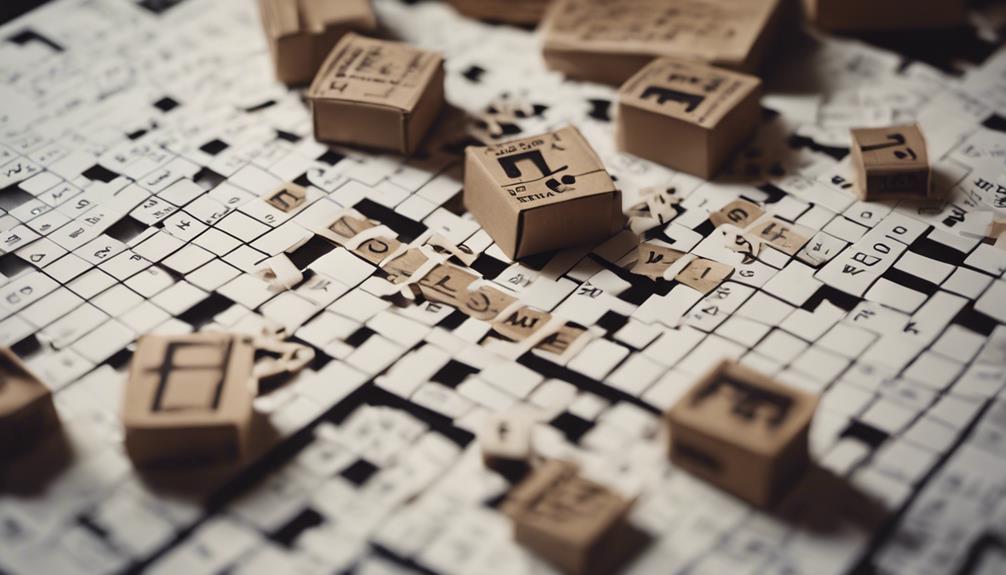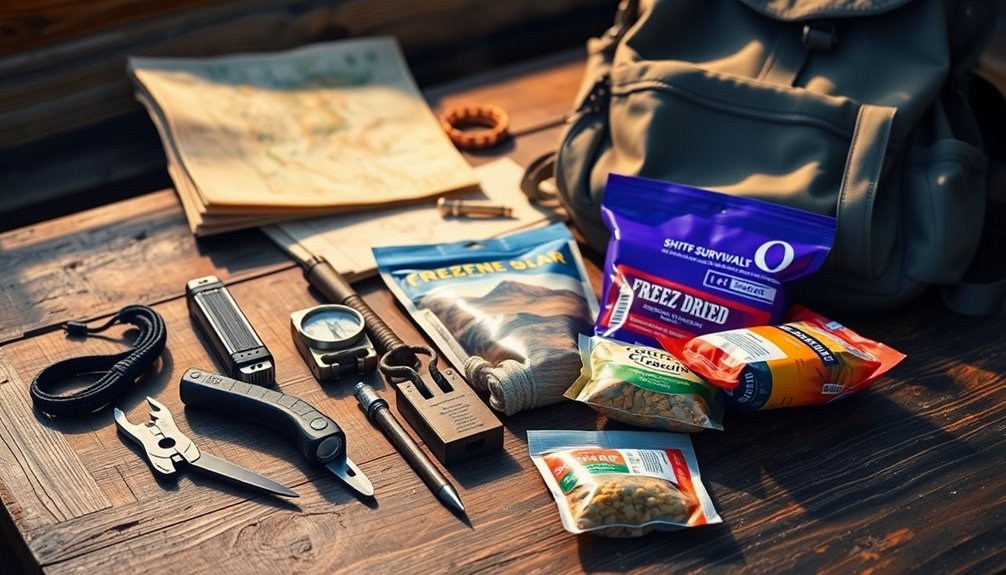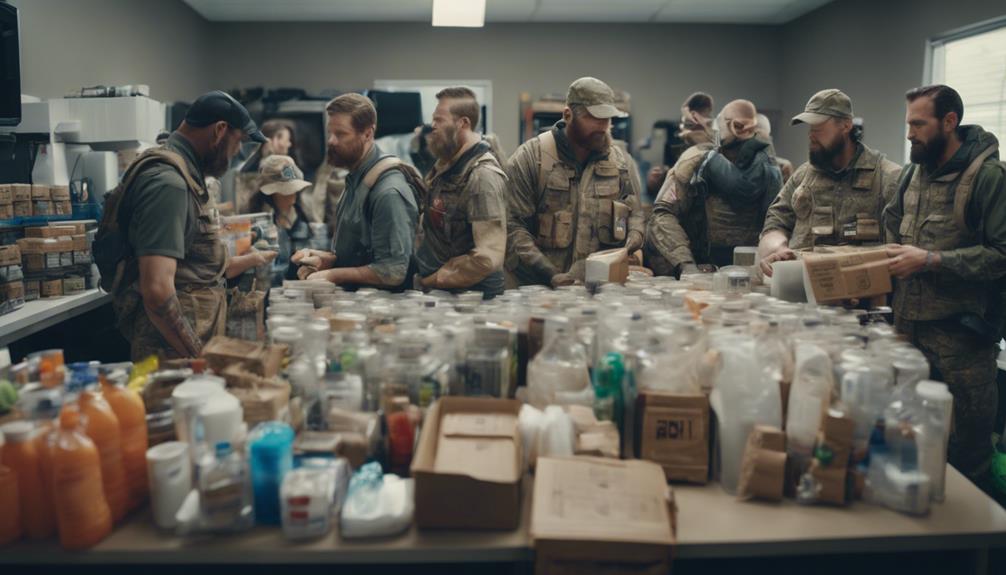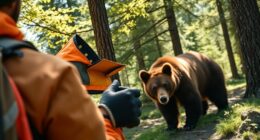The U.S. Military Survival Kit Type II Class III is your go-to gear for defense-grade preparedness. This kit packs essential tools like waterproof matches, a signaling mirror, and water purification tablets, ensuring you're ready in any emergency. You'll also find fishing gear for food and an extensive first aid kit for treating injuries. It's designed to be compact and durable, making it easy to carry. Regular maintenance and customization according to your needs can boost your survival confidence. Want to find out more about maximizing your survival kit's effectiveness? You're in the right place!
Key Takeaways
- The Type II Class III military survival kit includes waterproof matches, signaling mirrors, fishing gear, and water purification tablets for essential survival needs.
- Compact and durable containers ensure easy transport and resilience in extreme environments, crucial for defense-grade preparedness.
- Customization options allow users to tailor kits based on specific operational needs and regional climates for enhanced functionality.
- Regular maintenance and inspections, at least twice a year, keep survival gear reliable and ready for emergencies.
- Mastering fire starting, shelter building, and navigation techniques is vital for effective survival in challenging situations.
Overview of Military Survival Kits
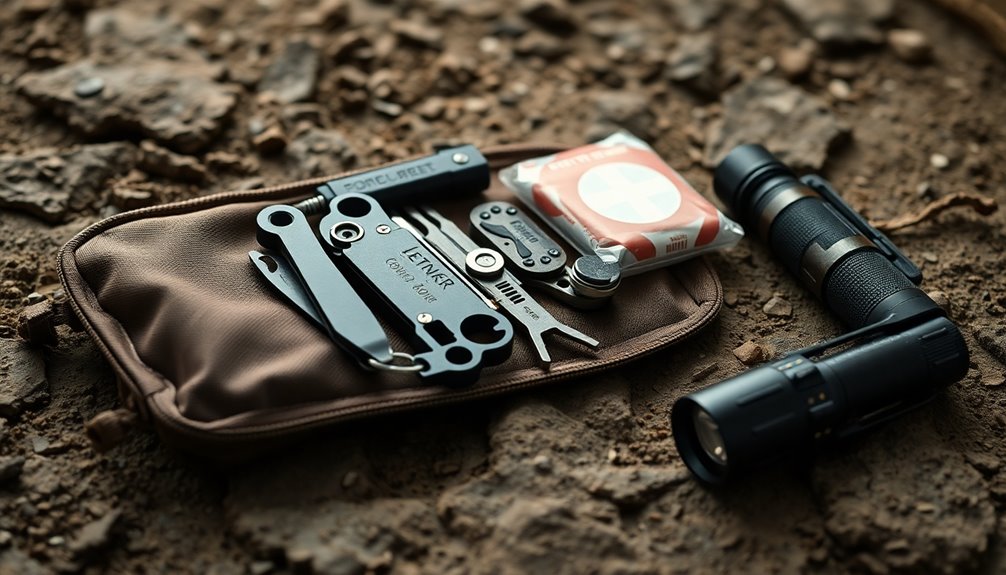
Military survival kits are fundamental tools designed to keep you safe in extreme environments. These kits, especially the U.S. Military Survival Kits, are crafted for wilderness and emergency situations, guaranteeing you're prepared for anything life throws your way. They contain critical tools like tactical knives, fire starters, compasses, signaling devices, and first aid supplies, all meticulously selected for their effectiveness and reliability.
Each military survival kit is packaged in compact, durable containers, making them easy to carry whether you're a soldier or an outdoor enthusiast. You can trust that these kits have undergone rigorous testing, so you know they'll perform when you need them most. This attention to detail guarantees that you're ready for various survival scenarios, providing peace of mind in challenging conditions.
Additionally, within these kits, you'll often find a Trauma Kit, which is essential for addressing injuries in the field. The combination of important survival gear and trauma supplies means you're equipped to handle emergencies efficiently.
Key Components of Type II Class III

The U.S. Military Survival Kit Type II Class III is indispensable for anyone needing to survive autonomously for 72 hours in isolated environments. This kit's components are rigorously tested to guarantee durability and reliability in extreme conditions.
| Component | Purpose |
|---|---|
| Waterproof Matches | Start fires for warmth and cooking |
| Signaling Mirror | Signal for help or navigate |
| Fishing Gear | Procure food from water sources |
| Water Purification Tablets | Assure safe drinking water |
In addition to these essential items, you'll find a First Aid Kit, which is critical for treating injuries and maintaining health in the wilderness. The kit also includes snare wire, allowing you to trap small game, further enhancing your food procurement options.
Customization Options for Survival Kits

When customizing your survival kit, you can select gear that meets your specific operational needs and environmental conditions.
Consider how regional climate and mission parameters affect the tools you choose, as these factors are essential for effectiveness.
Tailoring your kit not only enhances functionality but also boosts your confidence during missions.
Tailored Gear Selection
Customizing your survival kit can considerably enhance your chances of success in emergency situations. The U.S. Military Survival Kit Type II Class III is designed for 72-hour autonomous survival, but it's the personalization that makes it truly effective. You can tailor the kit contents based on your specific climate, terrain, and mission parameters, ensuring you have exactly what you need.
Essential components like waterproof matches, a signaling mirror, a compass, and a fishing kit are all standard, but you have options for customization. Consider lightweight and compact versions of survival tools to prioritize mobility, especially in demanding environments.
You might also include regional-specific items that cater to your unique circumstances, enhancing your overall preparedness.
Don't overlook the importance of personal gear that can boost your mental resilience during survival situations. Whether it's a family photo or a favorite piece of gear, these small touches can make a significant difference.
Regional Climate Considerations
Selecting the right gear for your survival kit hinges on the climate you might face during an emergency. Your Survival Kit Type II needs to be tailored to specific environments, as regional climate plays a critical role in determining essential items.
| Climate Type | Essential Gear | Customization Notes |
|---|---|---|
| Cold | Insulated clothing, hand warmers | Include fire-starting tools |
| Warm | Hydration systems, sun protection | Focus on lightweight gear |
| Coastal/Maritime | Waterproof matches, fishing gear | Include buoyancy devices |
| Urban | Self-defense tools, navigation aids | Prioritize compact equipment |
In cold climates, pack insulated clothing and hand warmers to combat harsh temperatures. For warm regions, prioritize hydration systems and sun protection to avoid heat exhaustion. If you're near the coast, make sure your kit includes waterproof matches and fishing gear for sustenance. Urban environments require self-defense tools and navigation aids since you'll navigate more complex terrains.
Customizing your Survival Kit Type II based on the expected duration of survival scenarios guarantees that you're prepared and equipped for the specific climate and terrain you might encounter.
Mission-Specific Equipment Needs
Understanding the specific mission context is vital to optimizing your Survival Kit Type II. This kit is designed for 72-hour autonomous survival, addressing your mission-specific equipment needs in isolated environments. Customizing your kit not only enhances your survival capabilities but also guarantees you're prepared for various scenarios.
Consider including these essential items tailored to your operational requirements:
- Waterproof matches – for reliable fire-starting in wet conditions.
- Signaling mirrors – to help rescue teams locate you during emergencies.
- Compact compass – making sure you maintain your navigation skills in unfamiliar terrain.
- Lightweight emergency food – providing necessary sustenance without adding bulk.
Adapting your Military Survival Kit Type for specific climates and terrains can greatly impact your success. Whether you're in a desert, forest, or maritime environment, selecting specialized tools is vital.
Additionally, incorporating personal items can support your mental resilience during high-stress situations. Remember, psychological preparedness is just as important as physical survival tools. By customizing your emergency kits, you'll not only meet your mission demands but also enhance your overall effectiveness in the field.
Maintenance of Survival Gear
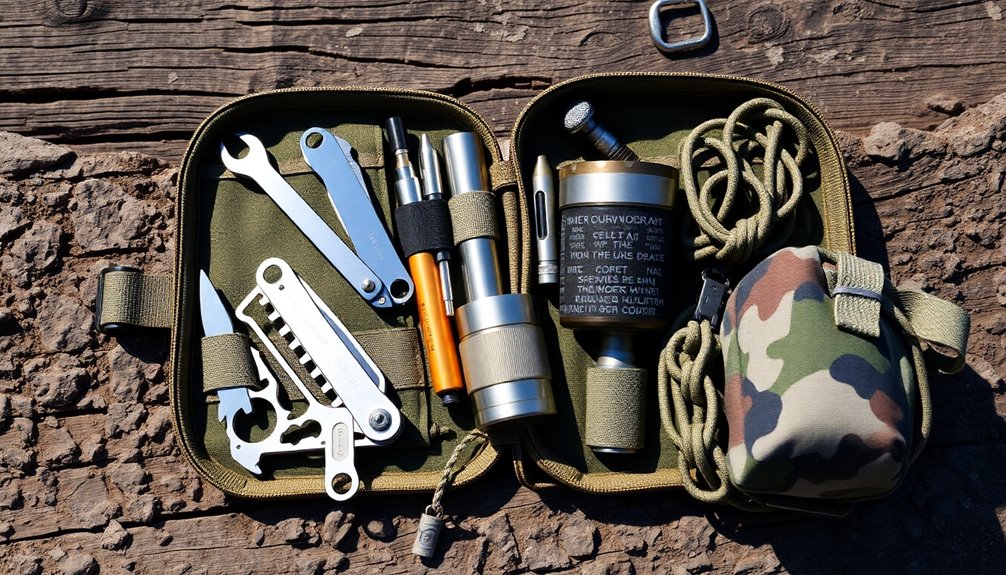
To guarantee your survival gear is always ready when you need it, regular maintenance is vital. Start by inspecting your kits frequently for signs of wear and damage. Make sure every item is in good working condition; reliable gear can make a noteworthy difference during emergencies.
Store your gear in durable, watertight containers like hard plastic bins or metal ammo cans to shield it from environmental elements. Conduct routine checks to promptly replenish any consumed items after use. A fully stocked kit is essential for deployment when time is of the essence.
Organize your gear systematically within the bag to facilitate quick access during emergencies, which can be critical in high-stress situations. Schedule maintenance inspections at least twice a year to assess functionality. Replace expired or outdated items to guarantee your survival kit remains effective and reliable.
Training for Effective Survival
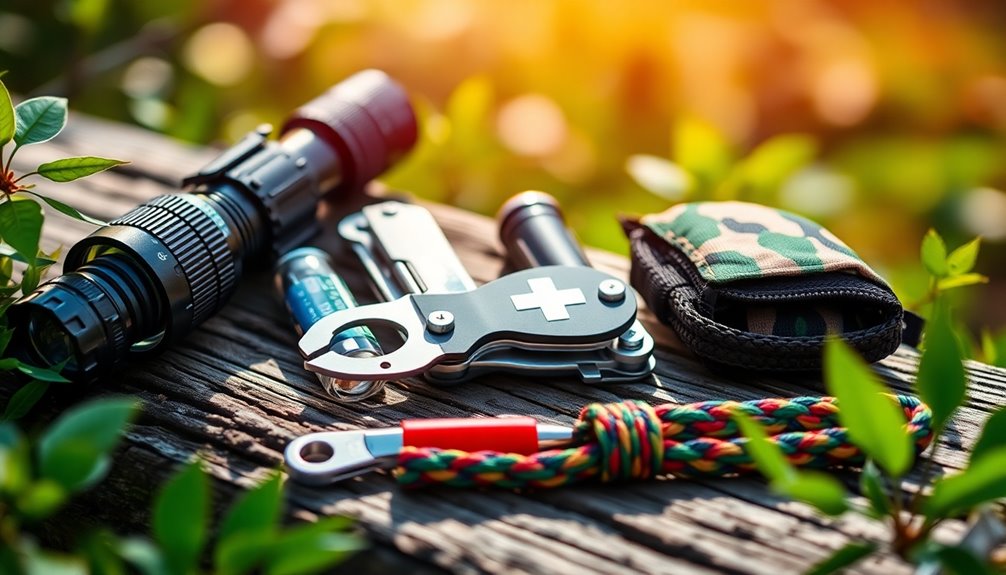
To be truly prepared for survival situations, you need to master essential techniques and regularly refresh your skills.
Conducting equipment familiarization sessions with the U.S. Military Survival Kit Type II Class III will help you understand how each tool works.
Essential Survival Techniques
Mastering essential survival techniques is essential for anyone aiming to thrive in challenging environments.
With the right skills, you can effectively utilize the tools in your tactical survival kit, guaranteeing you're prepared for any situation.
Here are four key techniques to focus on:
- Fire Starting: Practice using fire starters and waterproof matches to ignite a fire. It's vital for warmth, cooking, and signaling for help.
- Shelter Building: Learn how to construct a shelter using natural materials and tools in your kit. This will protect you from harsh weather and keep you safe.
- Navigation Skills: Familiarize yourself with using a compass and understanding basic map reading. This will help you find your way in unfamiliar terrain.
- First Aid: Master basic first aid and CPR techniques to handle injuries and medical emergencies. The Emergency Trauma items in your kit can be lifesavers.
Regular practice of these techniques won't only boost your confidence but also guarantee you're prepared for real-life emergencies.
Equipment Familiarization Sessions
Familiarity with your equipment is essential for survival in challenging situations. Equipment familiarization sessions are imperative for ensuring you, as a service member, can effectively use the U.S. Military Survival Kit Type II Class III. This kit contains critical items like waterproof matches, signaling mirrors, and compasses, all tailored for wilderness survival.
During these sessions, hands-on practice with the kit's components is fundamental. You'll enhance your skills in food procurement through fishing kits and snare wire, crucial in emergencies. Regular drills focusing on water purification tablets and shelter-building tools will notably improve your readiness for real-world survival scenarios.
Incorporating simulated emergency conditions during training allows you to test your knowledge and application of survival techniques using the kit's tools. This practical experience is invaluable, providing insights into real-life challenges you may face.
Additionally, emphasizing the importance of multi-functional tools within the kit enhances your operational efficiency and adaptability.
Ultimately, these equipment familiarization sessions prepare you to face unexpected situations with confidence, ensuring you're ready when it matters most. Prioritize this training to sharpen your survival skills and improve your chances of success in the field.
Regular Skills Refreshers
Equipment familiarization sessions lay the groundwork, but regular skills refreshers are what keep your survival abilities sharp. Conducting refresher training sessions at least twice a year guarantees you're prepared for real-world emergencies.
By practicing essential techniques, you reinforce your knowledge and build the confidence needed to handle trauma effectively.
Here are four critical components to include in your regular training:
- Fire Starter Mastery: Regularly practice starting fires under various conditions to guarantee you can create warmth and signaling when needed.
- Shelter Building: Hone your skills in constructing shelters using available materials, crucial for operator survival in harsh environments.
- First Aid Techniques: Simulate trauma scenarios to practice your first aid skills, guaranteeing you can respond quickly and effectively in emergencies.
- Navigation and Signaling: Include navigation exercises and signaling methods in your training to guarantee you can find your way and call for help when necessary.
Community Engagement and Resources

Engaging with your local prepper community can be a game-changer for enhancing your survival skills and knowledge. When you connect with like-minded individuals, you'll find invaluable support and knowledge sharing that can greatly benefit your preparedness efforts.
Community engagement allows you to learn about military survival kits and discover how others utilize them effectively in various scenarios.
Take advantage of free resources in your area, like survival gear giveaways and online courses. These opportunities can enhance your community's preparedness without straining your budget.
Social media platforms are also effective channels for networking with fellow preppers and accessing information about government agencies that might offer additional resources.
Consider joining affiliate programs to acquire essential survival gear at discounted rates. These kits provide not only practical tools but also a sense of belonging within the prepping community.
Finally, it's important to stay informed about the legalities regarding prepping and self-defense in your region. This knowledge guarantees your community engagement and preparedness efforts comply with local laws, making your survival planning even more effective. Additionally, understanding payment processing options can help you manage costs related to acquiring survival gear and resources efficiently.
Frequently Asked Questions
What Are the Top 7 Survival Items?
When you think about survival, you'll want to prioritize a few essential items.
First, pack a reliable knife for multiple tasks. Next, waterproof matches or a lighter will help you start fires.
Don't forget a compact first aid kit for emergencies. A water purification system is vital for safe drinking water.
A signaling device can alert rescuers, while a sturdy tarp or emergency blanket provides shelter.
Finally, a reliable compass will keep you oriented.
What Do Special Forces Carry in Their Survival Kit?
Imagine being stranded like Robinson Crusoe, relying solely on your wits.
Special Forces carry a survival kit packed with essential tools. You'll find waterproof matches to spark a fire, fishing kits for catching food, and signaling mirrors for communication.
Tactical knives and multi-tools enhance your versatility, while water purification tablets guarantee you stay hydrated.
With items like snare wire and emergency rations, you're prepared for any survival scenario that comes your way.
What Are the 10 Essential Survival Kit Items?
When you think about essential survival kit items, consider waterproof matches for starting fires, a signaling mirror for communication, and a reliable compass for navigation.
You'll also need fishing gear and snare wire to catch food, plus water purification tablets to guarantee safe drinking water.
Don't forget a multi-tool for versatility, emergency blankets for warmth, first-aid supplies for injuries, a whistle for signaling, and a flashlight for visibility in the dark.
What Typically Comes in a Survival Kit?
Imagine you're lost in the wilderness, and you reach for your survival kit.
It typically includes waterproof matches for fire, a signaling mirror to attract help, and a compass for navigation.
You'll find a fishing kit for food and snare wire for trapping small animals.
Water purification tablets guarantee you stay hydrated.
Each item's essential, lightweight, and designed to help you adapt and survive when every second counts.
Conclusion
In your quest for readiness, remember that a well-stocked survival kit can be your lifeline in dire times. With the right tools and training, you'll transform uncertainty into unwavering confidence. Embrace the essence of preparedness, and don't underestimate the power of community connections. Together, you can cultivate courage and capability, ensuring that you're always equipped to face whatever challenges come your way. Stay sharp, stay safe, and savor the strength of being ready for anything!



